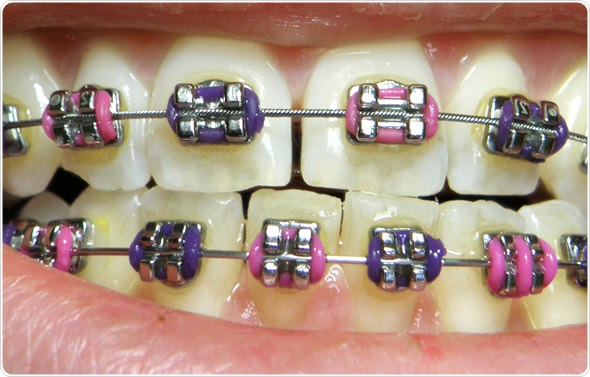Professional Cumming Braces and Aligners: What to Know Prior To You Check out
Wiki Article
Comprehensive Guide to Orthodontics Procedures for Correcting Oral Imbalances
In the world of orthodontics, the journey to achieving a completely lined up smile involves a myriad of procedures tailored to remedy dental imbalances. From conventional dental braces to unnoticeable aligners and even surgical choices, the field of orthodontics uses an array of remedies to address varying levels of oral abnormalities. Understanding the intricacies of each procedure, including their systems, advantages, and prospective disadvantages, is vital in making notified choices concerning one's orthodontic therapy. As we browse with the detailed guide to orthodontic treatments for dealing with oral imbalances, the complex details of each method will unfold, dropping light on the path toward a useful and unified oral alignment.Orthodontic Procedures Summary

Along with standard braces and clear aligners, orthodontists may likewise suggest other treatments like headwear, palatal expanders, or retainers to address specific placement issues (orthodontics). These procedures are customized per patient's distinct demands and might involve a combination of treatments to accomplish the wanted outcomes. Normal adjustments and monitoring are critical components of orthodontic treatment to make sure progress gets on track and to make any necessary adjustments in the process. By undertaking orthodontic treatments, patients can not just accomplish a straighter grin yet also improve their overall dental wellness and feature.
Standard Braces: How They Work
When considering orthodontic therapies for dental imbalances, conventional dental braces attract attention as a time-tested method for correcting teeth positioning. Traditional braces include brackets, cords, and bands that interact to apply continual pressure on the teeth, progressively moving them into the wanted positioning. The braces are attached to the teeth utilizing an unique adhesive, and the wires are threaded with the braces. By adjusting the tension of the cords, orthodontists can regulate the instructions and pressure used to each tooth, guiding them right into correct positioning with time.
As pressure is used to the teeth via the dental braces, the bone bordering the teeth is improved to support the new tooth positions. Patients will require regular adjustments at the orthodontist's office to ensure the dental braces proceed to use the proper stress for efficient teeth motion.
Undetectable Aligners: Advantages And Disadvantages
Invisible aligners offer a practical and discreet choice to standard dental braces for correcting dental misalignments. These clear, personalized trays are basically unseen when used, making them an enticing option for individuals seeking a more visually pleasing orthodontic treatment. One of the primary advantages of unnoticeable aligners is their removability, enabling less complicated upkeep of oral hygiene compared to traditional braces. People can remove the aligners before consuming or cleaning their teeth, reducing the danger of food getting embeded the home appliance and streamlining the cleansing process.
Surgical Orthodontic Options
Surgical treatments in orthodontics present feasible alternatives for resolving complicated oral misalignments that might not be effectively settled through standard orthodontic treatments. While traditional braces and undetectable aligners can deal with lots of orthodontic concerns, certain situations require surgical intervention to accomplish optimal outcomes. Surgical orthodontic options are usually recommended for extreme malocclusions, considerable jaw discrepancies, and situations where the underlying bone structure needs adjustment to accomplish correct placement.One common medical orthodontic treatment is orthognathic surgical procedure, which entails rearranging the jaws to remedy practical issues such as trouble chewing or talking. This surgical procedure is typically executed in collaboration with an orthodontist that assists line up the teeth prior to and after the procedure. Surgical orthodontics may also involve procedures to subject affected teeth, remove excess periodontal tissue, or improve the jawbone to create a more harmonious face profile.
Before taking into consideration surgical orthodontic choices, patients undertake an extensive assessment to identify the requirement and potential advantages of such treatments. cumming orthodontist. While surgery may appear overwhelming, it can dramatically boost both the function and looks of the smile in cases where traditional orthodontic therapies fail
Retainers and Post-Treatment Treatment

Post-treatment treatment involves adhering to the orthodontist's instructions carefully. This might consist of proper dental health methods, going to follow-up consultations, and using the great site retainers as recommended. Failing to adhere to post-treatment treatment guidelines can result in regression, where the teeth gradually return towards their initial placements. Consistent retainer wear, excellent oral health, and regular dental examinations are essential for preserving the outcomes achieved through orthodontic surgical procedure and making sure the long-term security of the dealt with dental placement.
Conclusion
Finally, orthodontic treatments supply various options for remedying dental misalignments. Standard dental braces utilize steel brackets and wires to shift teeth into appropriate positioning. Invisible aligners provide an even more very discreet choice however may not appropriate for all situations. Surgical orthodontic options are offered for more extreme misalignments. Retainers are generally utilized post-treatment to keep the new placement. In general, orthodontic treatments can efficiently improve dental health and wellness and aesthetic appearance.As we navigate with the detailed guide to orthodontic procedures for fixing oral imbalances, the intricate details of each technique will certainly unfold, shedding light on the path toward a unified and useful dental alignment. - braces
One of the most typical orthodontic therapies is the usage of dental braces, which are composed of steel braces and cords that use mild stress to progressively change teeth right into the desired position.When considering orthodontic therapies for dental imbalances, conventional dental braces stand out as a reliable technique for fixing teeth placing. Additionally, unseen aligners may not be suitable for complex orthodontic problems that need even more considerable teeth activity, as they are normally advised for mild to moderate instances. Retainers are personalized orthodontic tools created to hold teeth in their corrected placements after the conclusion of orthodontic treatment.
Report this wiki page